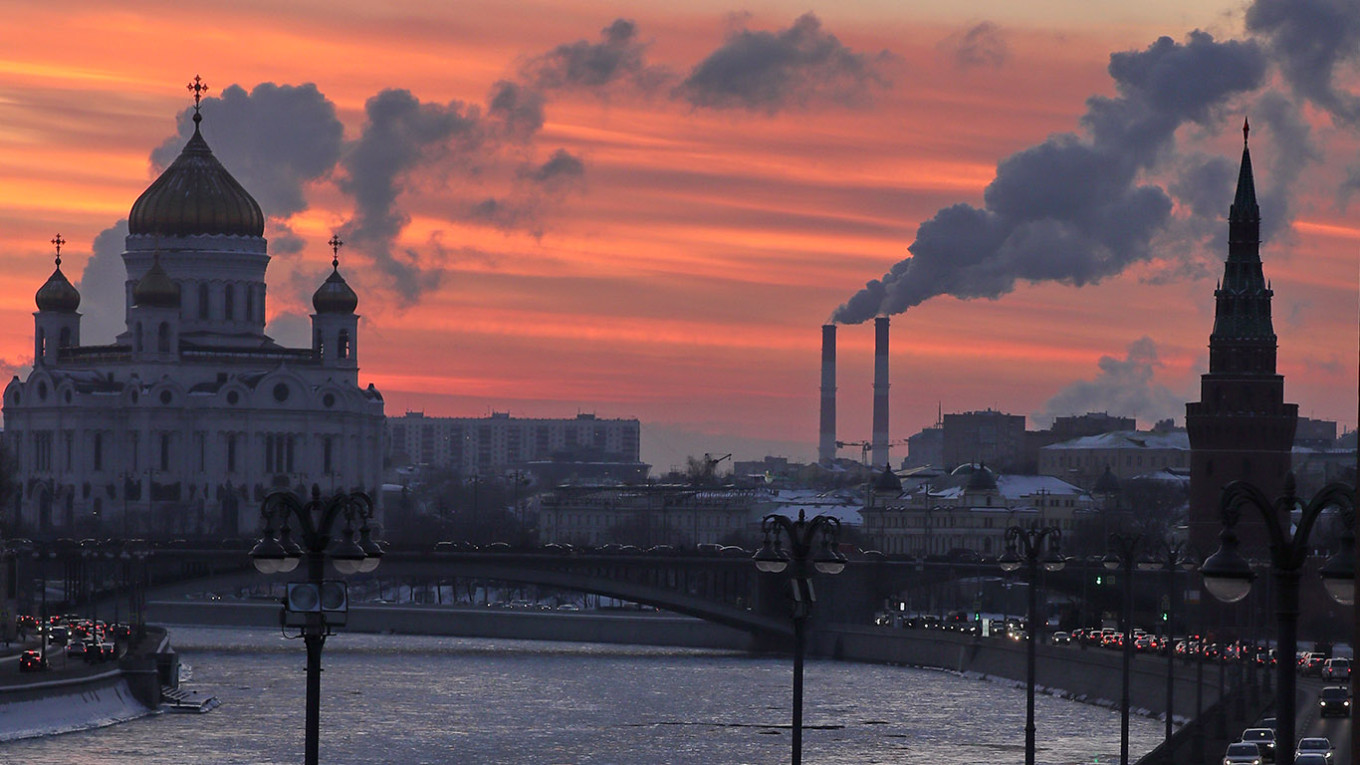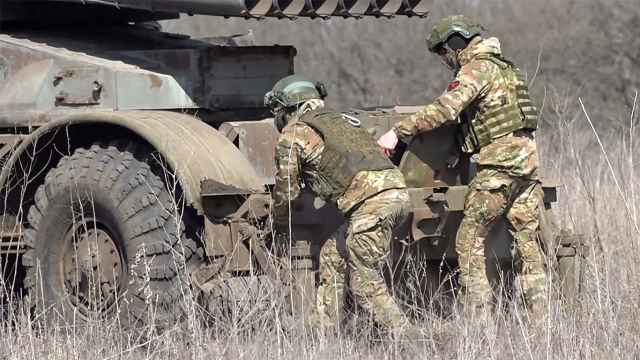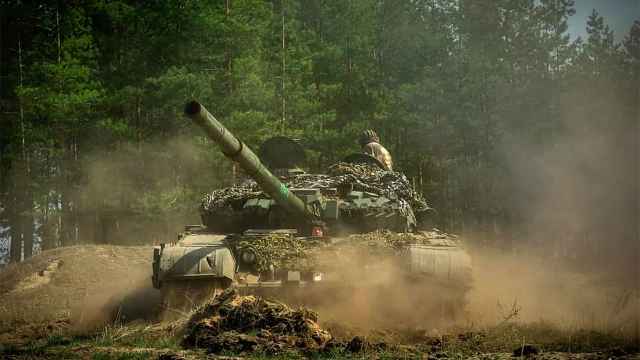The focal point of Russia’s invasion of Ukraine has often been the front line. But Ukraine’s ability to attack infrastructure deep within Russian territory has thrown some of Russia’s infrastructure vulnerabilities into sharp relief.
Ukraine’s ability to target Russia’s critical national infrastructure — from transport to oil refineries and depots — may not have been able to shift the dial on the war. However, they do highlight Russia’s dependence on the production and export of hydrocarbons.
Attacks on national infrastructure have been a feature of this war since the start. In a U.S. policy shift, Ukraine was in November 2024 permitted by the Biden administration to use its longer-range Storm Shadow missiles against targets within Russia. The U.S. had argued against their use in Russian territory, but Russia’s deployment of North Korean troops to shore up its vulnerable southern border region in Kursk to push back Ukraine’s incursion there, as well as the incoming Trump administration which has sought a negotiated end to the conflict, likely prompted the change in US policy.
The most significant attacks within Russia took place in January 2025, with an uptick in targeted strikes using a barrage of precision drones to hit high-value oil fields and manufacturing plants. The attacks have continued into February, most recently with a barrage on 10 February intended for the Afipsky oil refinery in the Krasnodar region.
In the absence of information, it has been assumed that these attacks are impacting on Russia’s supply chain and its ability to produce and export hydrocarbons, as fires at the depots have taken days to be extinguished. This assumption is also largely because Russia’s statistics agency Rosstat by August 2024 entirely stopped publishing data on oil production, and the Kremlin has remained tight-lipped on the extent of the damage.
But Russia is evidently experiencing a host of other issues which may be accounting for its numerous infrastructure problems.
First, the damage to refineries in Russia appears mostly contained for now. While it might temporarily affect production, there is no sign yet that these attacks have had a measurable impact on Russia’s export volumes. For example, the oil refineries that came under attack in 2024 were able to come back online after a couple of weeks of repairs.
Second, the attacks appear to be walking a careful line between disrupting Russia’s supply and actually impacting global supply chains, of which Russia remains an important part. While the sheer number of targets that Ukraine has managed to hit across Russia has been hailed as a success of Ukraine’s reach into the country — and the ability of the ATACMS missiles — it also suggests that the tactic is to go for geographical expanse, rather than sustained damage to particular refineries. A more concentrated tactic would likely have a more discernible impact on international supply chains.
Whether these attacks can sufficiently disrupt supplies is unlikely. But Russian infrastructure remains highly vulnerable across the board — and not necessarily to attack from the air.
While the focus has shifted to oil refineries, Ukraine has also sought to probe and expose weaknesses in Russia’s railroad system, a vital part of not only Russia’s exports but also its military movement across the country and into the war theatre in eastern Ukraine.
Often described as the backbone of the country, Russia’s railway systems, ports and roads are the key to advancing its foreign policy through trade links with international partners such as China and Iran; its domestic connectivity, and its military maneuvering from parts of eastern Russia to the front in Ukraine. These linkages allow Russia to resupply the front relatively seamlessly, as well as maintain a high export volume of hydrocarbons to fund the war. For this reason, the targeted destruction of key nodes of the rail network by the Ukrainian armed forces has always loomed large as a way of frustrating Russia’s war goals.
In the early days of the war, recognizing the importance of railways to the advancing Russian army, Ukraine sabotaged some of its own rail crossings so that Russia could not use the connections to advance more deeply into the country. There were several attempts by pro-Ukrainian groups throughout 2023 to disrupt Russia’s internal rail network, with small-scale attacks that disabled electrical equipment and temporarily slowed down shipments of materiel. Small networks of Belarusian opposition groups did similarly in 2022, fighting their own railway war against Russia’s appropriation of Belarus’s rail network to launch the offensive on Kyiv. While the Belarusian groups were severely repressed, this activism has continued, with Ukrainian groups most recently in December 2024 setting alight a relay cabinet, disrupting signaling on the line.
One of the most serious incidents was barely reported in Russia in November 2023, in which Ukraine’s SBU claimed that it had blown up part of the Baikal Amur Mainline (BAM) in Buryatia, which runs into China, claiming that it was carrying military equipment. These attacks have been few and far between and have largely rumbled on in the background of the war, but highlighted the fact that Russia has a plethora of pre-existing and new infrastructure issues to contend with. A close reading of its internal discussions reveals that this has not gone unnoticed at the top.
In a Jan. 30 meeting with his own Transport Minister, Roman Starovoit, President Vladimir Putin ignored platitudes about how well the sector is performing, interrupting and zeroing in instead on the fact that cargo loading is down by 4% overall. Starovoit failed to adequately account for this, aside from noting that this was a widespread issue. But there are several explanations for this.
Russia’s overloaded railway system is in the throes of a full upgrade — the BAM line in the east and the Trans-Siberian, both of which are the key routes for export to China, are under expansion and so it is not functioning at capacity. This means that high-value goods such as oil and precious metals need to be prioritized over coal. Western sanctions have been most effective at targeting Russia’s coal sector: bankruptcies are reported across the industry, with declining domestic and external demand, a labor storage, high railway tariffs to use Russia’s own network and meager investment plans.
Other transport issues that Starovoit failed to mention abound: reports of rail cars idling with an excess of wagons, and spare parts shortages due to the war all mean freight services are significantly slowed down and are operating inefficiently. Although numbers are difficult to verify, sanctions appear to be fairly effective at prompting a locomotive shortage in Russia. Although locomotive plants such as TMH in Novocherkassk were tasked with upping their output in 2024, the industry is under pressure and approaching capacity.
For now, it is unlikely that Ukraine’s piecemeal attacks on oil and rail do much more than cause delays in the operation of the machine. However, they are another spanner in the works that those who oversee Russia’s infrastructure capabilities must contend with. If Russia is to continue the war to the West and expand its export partnerships to the East, it will have to confront some of these systemic vulnerabilities.
A Message from The Moscow Times:
Dear readers,
We are facing unprecedented challenges. Russia's Prosecutor General's Office has designated The Moscow Times as an "undesirable" organization, criminalizing our work and putting our staff at risk of prosecution. This follows our earlier unjust labeling as a "foreign agent."
These actions are direct attempts to silence independent journalism in Russia. The authorities claim our work "discredits the decisions of the Russian leadership." We see things differently: we strive to provide accurate, unbiased reporting on Russia.
We, the journalists of The Moscow Times, refuse to be silenced. But to continue our work, we need your help.
Your support, no matter how small, makes a world of difference. If you can, please support us monthly starting from just $2. It's quick to set up, and every contribution makes a significant impact.
By supporting The Moscow Times, you're defending open, independent journalism in the face of repression. Thank you for standing with us.
Remind me later.






